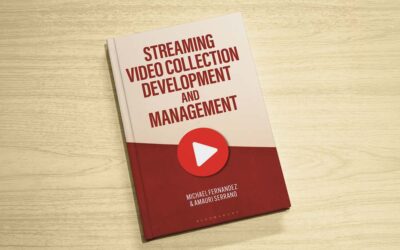Using Spiral Learning in Instructional Design
Lauren Hays
In the spiral learning method, instructors are encouraged to circle back to topics and add new information each time.
The spiral learning method is an instructional design model I really like because it aligns so well with the spacing effect. This definition from Training Industry explains the method well:
“Spiral learning is a teaching method based on the premise that a student learns more about a subject each time the topic is reviewed or encountered. The idea is that each time a student encounters the topic, the student expands their knowledge or improves their skill level” (para. 1).
As educators, we often need to think about how we can share information and support learners in remembering what we have to teach them. Using the spiral learning method is one approach. In libraries, there are a few ways to use this method.
Often, our teaching in libraries is limited to a single session or a couple of sessions. When this is the case, we have to think about spiral learning in a limited period of time. Despite the time limitations, there are still ways to circle back to topics during a one-hour period. For example, you can start by introducing a database, show a basic search, have students conduct a search and find sources. Then, bring the class back together and demonstrate advanced search features. Again, have students conduct a search and find sources. Finally, bring the class back together and demonstrate ways to limit search results. Ask students to use the limiters with their current search results. End the class with having students review the sources and reflect on the different types of sources they found.
Instead of showing all the features of a database at the beginning of the session and then having students conduct their own searches, you circle back and build knowledge over the course of the session.
A second example of how to use spiral learning in the library is to create tutorials that incorporate the spiral method. For example, let’s say you are creating a tutorial on academic publishing. You start the tutorial with a basic description of peer review, then include examples of academic publishers and the editorial process. Then, you spiral back to peer review and explain the open peer review process. After that you share examples of journals with a traditional peer review process and open peer review. Next, the tutorial explains collaborative peer review and includes examples of journals that use a collaborative peer review approach.
Both of these examples are focused on fairly narrow topics. In a longer class, you would have the opportunity to spiral many different topics and build student knowledge over an extended period of time. However, because of the nature of many librarians’ work, I wanted to give examples of how to use spiral learning in shorter lessons.
Lauren Hays
Lauren Hays, PhD, is an Assistant Professor of Instructional Technology at the University of Central Missouri, and a frequent presenter and interviewer on topics related to libraries and librarianship. Her expertise includes information literacy, educational technology, and library and information science education. Please read Lauren’s other posts relevant to special librarians. And take a look at Lucidea’s powerful integrated library systems, SydneyEnterprise, and GeniePlus, used daily by innovative special librarians in libraries of all types, sizes and budgets.
Never miss another post. Subscribe today!
Similar Posts
Growing Your Leadership Skills: 7 Tips for Special Librarians
Great library leaders aren’t born—they’re made through learning self-reflection and practice. Here are seven strategies to help you grow and lead with impact.
Keeping Up with Copyright and Generative AI: What Special Librarians Need to Know
As generative AI becomes more prevalent copyright law is evolving to address its impact. A new report from the U.S. Copyright Office provides guidance on what is (and isn’t) copyrightable.
Understanding Shadow AI: Risks Costs and Governance
AI can enhance search discovery and efficiency but unsanctioned adoption—known as “shadow AI”—can lead to budget overruns and compliance risks. Here’s how to evaluate AI pricing models and build a governance strategy that balances innovation with cost control.
Interview with an Author: Fernandez on Streaming Video Collection Development
As demand for streaming video in libraries grows so do the challenges of managing access budgets and licensing. Co-author Michael Fernandez shares key insights from his book “Streaming Video Collection Development and Management”.






Leave a Comment
Comments are reviewed and must adhere to our comments policy.
0 Comments